FST4W was introduced, together with FST4, in WSJT-X v2.3.0 together with a Quick-Start Guide. While especially suitable for use on the LF and MF bands the shorter sequence variants can be used on the HF bands.
This protocol has several useful features over WSPR:
o Option of four sequence lengths, designated in seconds as -120, -300, -900 and -1800
o Better sensitivity, e.g. FST4W-120 SNR threshold is about 1.4 dB lower than WSPR.
o Better tolerance to Doppler spread, e.g. an FST4W-120 signal with a Doppler spread of 2 Hz will decode above -24 dB SNR while WSPR would need to be above -17 dB.
o Optional measurement of spectral spread, useful as a diagnostic and for insights into propagation.
A down side of FST4W with WSJT-X is that the sequence length has to be specified for the receiver and only transmissions of that type would be decoded. With WD 3.0 Rob has enabled decoding of all FST4W variants and WSPR simultaneously. This feature is set up by altering your wsprdaemon.conf file to indicate which mode(s) you want decoding on which band, using W2 and F* where * is the length in minutes, e.g.
declare WSPR_SCHEDULE=(
"00:00 G3ZIL_3,630,W2:F2:F5:F15:F30 G3ZIL_3,160,W2:F2:F5:F15 G3ZIL_3,80,W2:F2:F5 G3ZIL_2,20,W2:F2:F5"
)
A list of FST4W WsprDaemon reporters and what bands they have set up is available to download as a txt file. It is updated every 10 minutes. Note that the rows are in Grid Locator order, with WD version, then the latest reporting time as "yyyy-mm-ddThh:mm", followed by the band in metres and the modes set to decode for that band.
Mesurement of spectral spread is enabled by default in WsprDaemon 3.0 onward, the result in milliHertz (mHz) is placed in the 'metric' field in the wsprdaemon_spots_s tables on the WD servers. More information can be found in the following:
A data report is available that shows how FST4W spectral spreading and SNR measurements can be used to identify propagation modes on 14 MHz. Ionospheric modes such as one-hop and two-hop can be distinguished, as can instances of two-hop ground side scatter, where propagation is not along a great circle. This work has been presented at the HamSci March 2023 workshop, see Presentations.
A paper FST4W on the HF Bands: Why - What to expect - Equipment - Results was presented at the ARRL/TAPR Digital Communications Conference, Charlotte, N.C., September 2022.
WsprDaemon 3.0 Supports FST4W
WsprDaemon
Robust decoding and reporting for WSPR FST4W FT8 FT4 WWV WWVH CHU